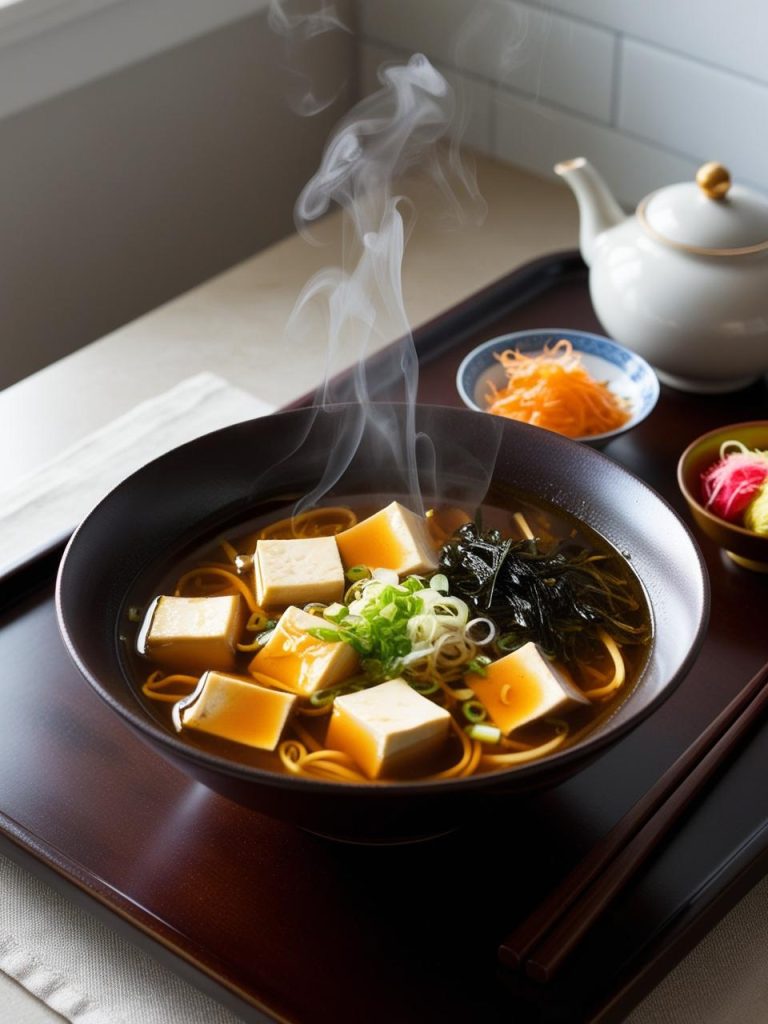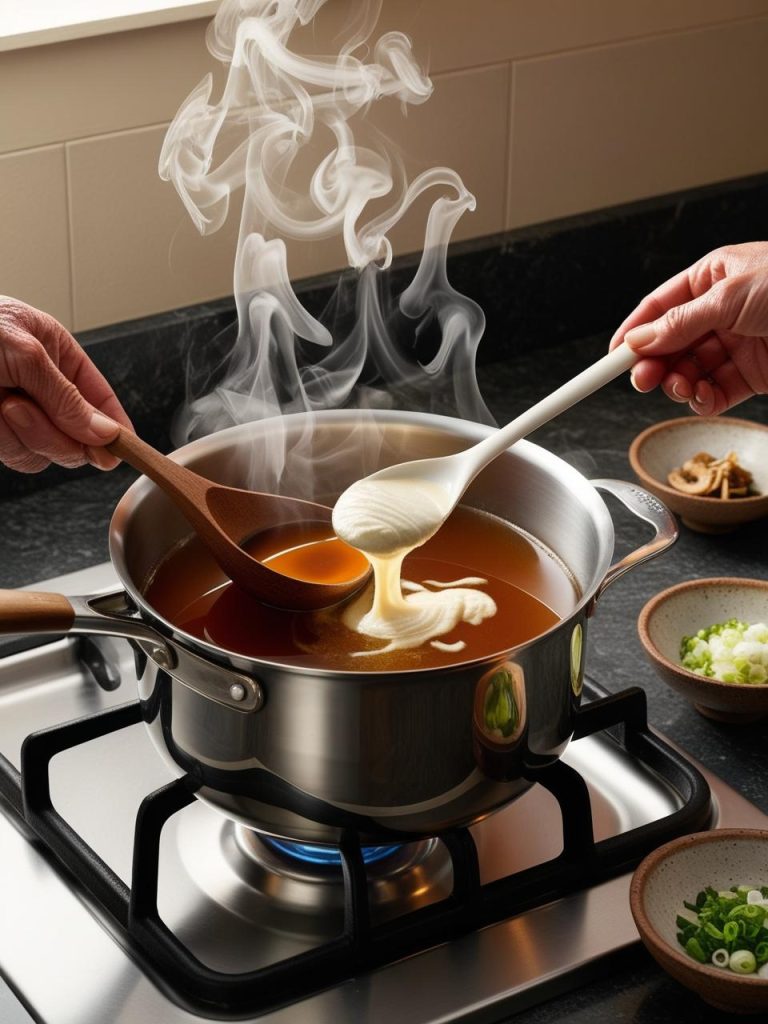Miso Soup: My Soul-Soothing Bowl of Comfort
|
Cooking Time: 15 minutes |
Servings: 4 |
|
Prep Time: 5 minutes |
Calories: ~90 per serving |
|
Total Time: 20 minutes |
Cuisine: Japanese |
There’s something magical about miso soup. Every time I sip on its warm, savory goodness, it feels like a hug for my insides. But the first time I ever made it at home? Oh, that was an adventure—and it’s a story I love sharing. So, grab a cup of tea (or a bowl of miso soup), and let me tell you how this unassuming dish became a staple in my kitchen.

A Little History: The Heart of Japan in a Bowl
Miso soup is more than just food; it’s culture, tradition, and history served up in a bowl. Originating in Japan, this humble dish dates back to the 14th century, when miso paste became widely accessible. Japanese households quickly embraced it for its simplicity and ability to nourish the body. What’s fascinating is how it’s evolved—from the traditional “ichiju-sansai” (one soup, three side dishes) meals in Japan to the global kitchens that now celebrate its flavors. Whether served at a high-end sushi bar or in a cozy family home, miso soup always manages to connect people to its roots.
Tools of the Trade: What You’ll Need
Making miso soup doesn’t require fancy gadgets. That’s part of its charm! Here’s what I use:
- Medium saucepan: For simmering the broth.
- Ladle: To serve with elegance.
- Small whisk or spoon: For dissolving the miso paste (trust me, this makes all the difference).
- Knife and cutting board: For prepping tofu and green onions.
And that’s it! No over-complicated tools—just the basics.

Ingredients: The Stars of the Show
You’ll need a handful of ingredients, but each one plays a vital role:
- 4 cups dashi broth: The savory base that’s the heart of this soup. If you’re in a pinch, vegetable stock works, but dashi’s umami is unmatched.
- 3 tablespoons miso paste: Choose white or yellow miso for a milder flavor, or red miso for a richer, saltier kick.
- 1 cup silken tofu: Cut into small cubes.
- 1 sheet dried seaweed (wakame): Rehydrated and chopped.
- 2 tablespoons green onions: Thinly sliced for garnish.
- Optional add-ins: Mushrooms, spinach, or even shredded chicken if you’re feeling adventurous.
Instructions: Bringing It All Together
Here’s how I make it, step by step:
- Start the broth: Heat the dashi broth in a medium saucepan over medium heat. Bring it to a gentle simmer—not a rolling boil. (Boiling can destroy the delicate flavors of dashi.)
- Prep the seaweed: While the broth heats up, soak the dried wakame in a small bowl of water for 5 minutes. It’ll expand like magic! Drain and chop it into smaller pieces.
- Add tofu and seaweed: Gently stir the tofu and rehydrated wakame into the simmering broth. Let it cook for 2-3 minutes to warm through.
- Dissolve the miso paste: This step is crucial. Turn the heat to low. Using a small whisk or the back of a spoon, dissolve the miso paste in a ladleful of hot broth before mixing it back into the pot. This ensures no clumps and preserves the probiotics.
- Final touches: Stir in the green onions and any optional add-ins. Taste and adjust with a pinch of salt if needed.
- Serve and savor: Ladle the soup into bowls and serve immediately. I always recommend taking the first sip slowly—it’s like tasting serenity.

Special Notes: Little Tips for Big Flavor
- Don’t boil the miso! It’s a cardinal rule. High heat can kill the beneficial probiotics in the miso paste, which are part of what makes this soup so healthy.
- Experiment with miso types: White miso is mild and sweet, while red miso packs a punch. Mixing the two can create a beautifully balanced flavor.
- Batch-friendly: Make the dashi broth ahead of time and store it in the fridge. It’ll save you precious minutes on busy days.
Why I Love Miso Soup (and You Will Too)
Beyond its comforting taste, miso soup is packed with health benefits. The fermented miso paste works wonders for gut health, while wakame seaweed provides essential minerals like iodine and iron. Tofu adds a dose of protein, and the warm broth is perfect for hydration—especially on chilly days or when you’re feeling under the weather.
For me, making miso soup has become a form of self-care. It’s my go-to when life feels overwhelming, or when I just need a quiet moment to reconnect with myself. There’s a certain mindfulness in the process—from dissolving the miso paste to watching the steam rise as I ladle the soup into my favorite bowl.
Nutrition: What’s in Your Bowl?
Here’s a quick breakdown per serving:
|
Calories: ~90 |
Carbohydrates: ~8g |
|
Protein: ~5g |
Fiber: 1g |
|
Fat: ~3g |
Sodium: ~700mg |
So, next time you’re craving something warm, light, and nourishing, give miso soup a try. It’s more than just a dish—it’s an experience, a tradition, and a little bowl of happiness.
